Rome, Calatrava's Sails completed for 2025 Jubilee
On the extreme eastern outskirts of Rome, in the middle of the fields near theTor Vergata University (on that esplanade where in August 2000 Pope John Paul II met 2 million young people for the Jubilee edition of World Youth Day), stands out with its characteristic shark fin shape a great unfinished work of modern architecture and which now may finally see the process for its completion begin. We are talking about what was supposed to be the “City of Sports” but which everyone in Rome simply calls Calatrava’s Sails. In fact, it was Spanish archistar Santiago Calatrava who signed the project with which the Roman university of Tor Vergata began work in 2005 on the construction of a sports facility that could hold the 2009 World Swimming Championships. Work stopped in 2007 and the facility has remained as we see it now since that year. This great unfinished business, however, may finally find a conclusion thanks to the interventions funded as part of the works to be carried out for the Jubilee of the Catholic Church in 2025 with the allocation of 37 million euros to complete the facility by December 2024.
The sports facility designed by the Spanish architect consists of two specularly side-by-side states, both covered by a lattice structure made of metal beams, joined by opaque white panels (and 18 percent of the total transparent glass) to allow light to enter, and undulating in shape to make it look like both a wind-blown sail and the pointed fin of a shark. All of course white, the Valencia-based designer’s favorite color.
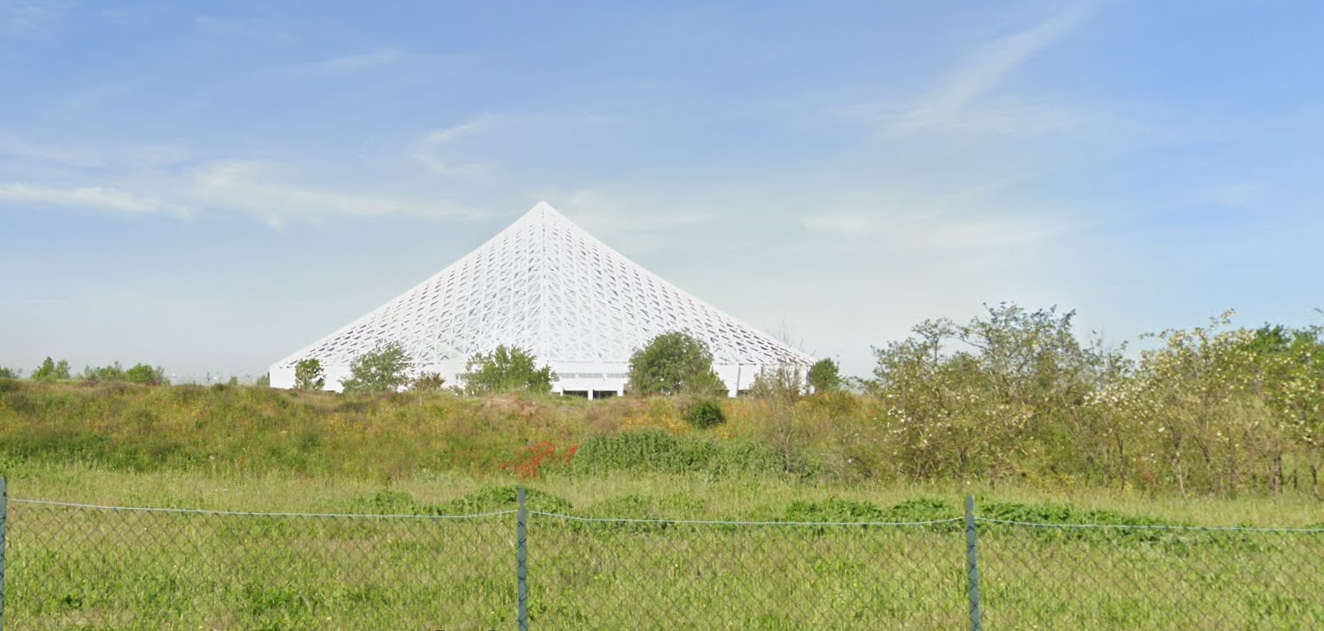
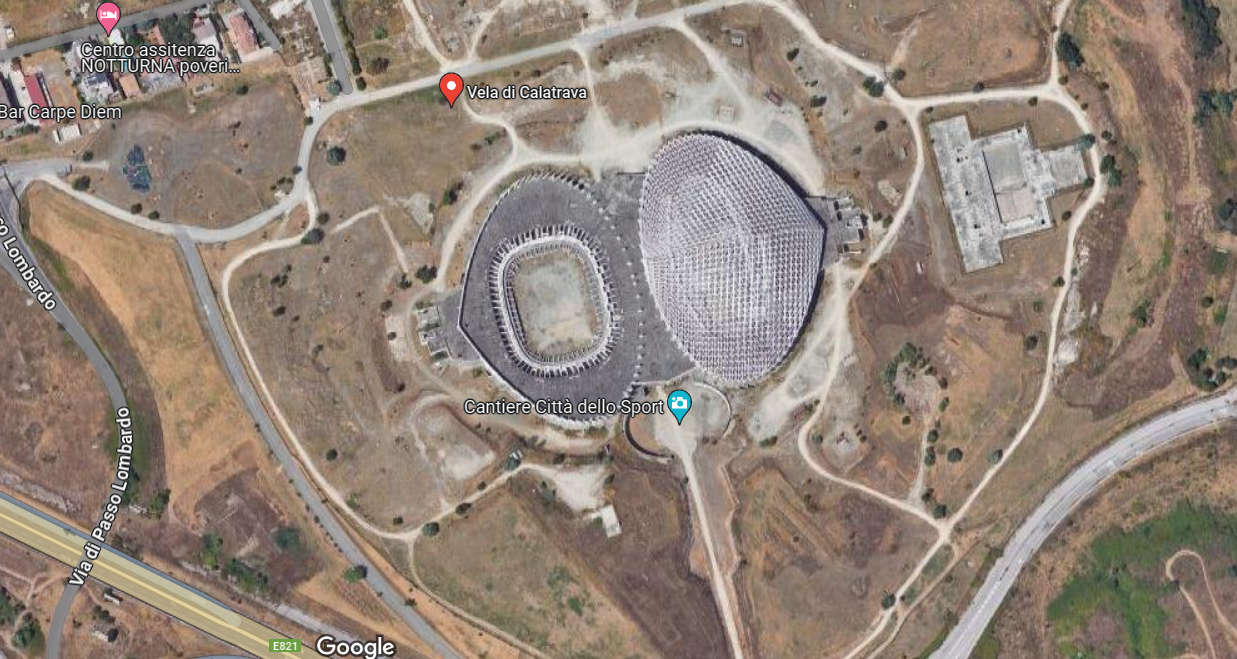
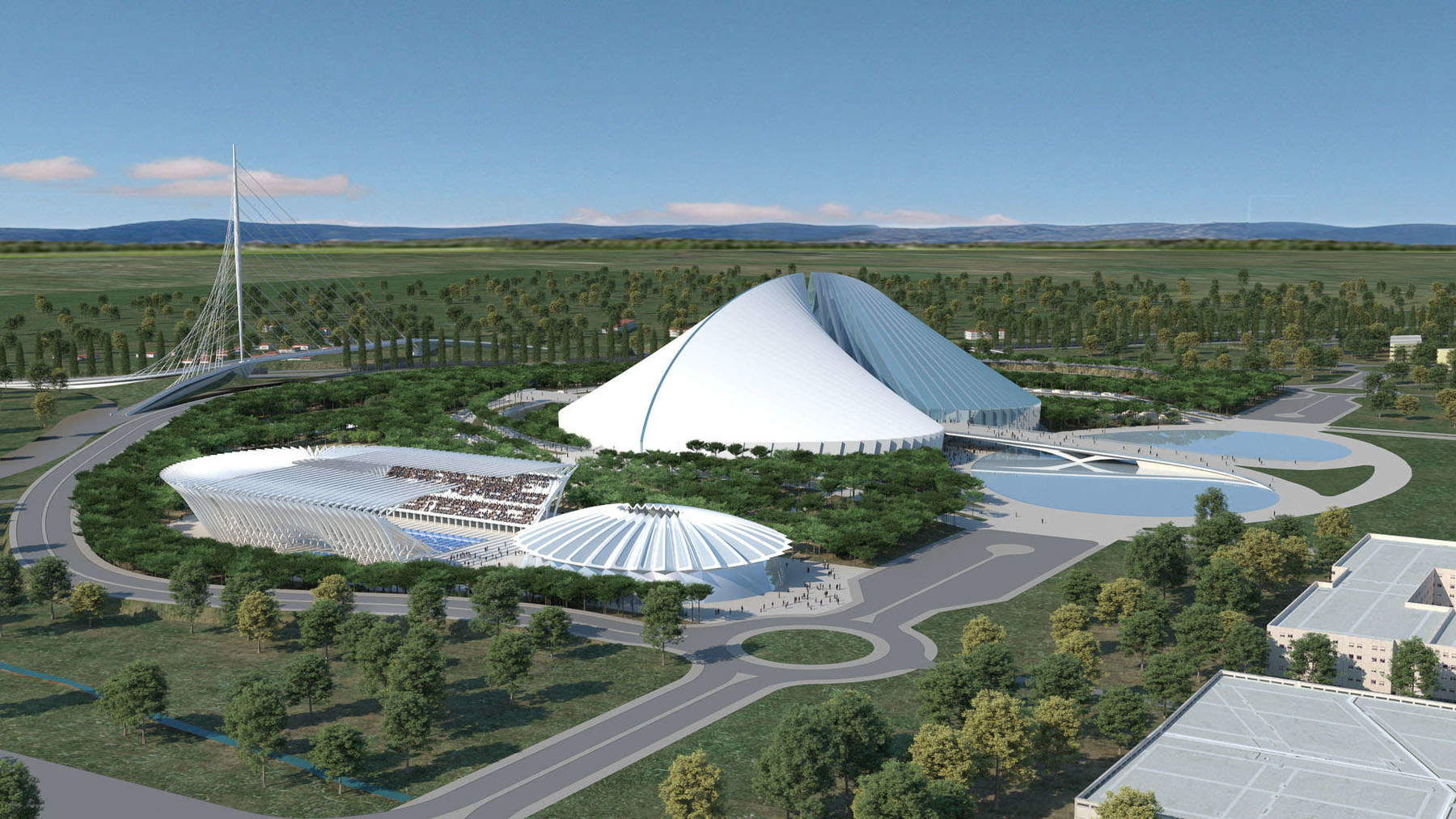
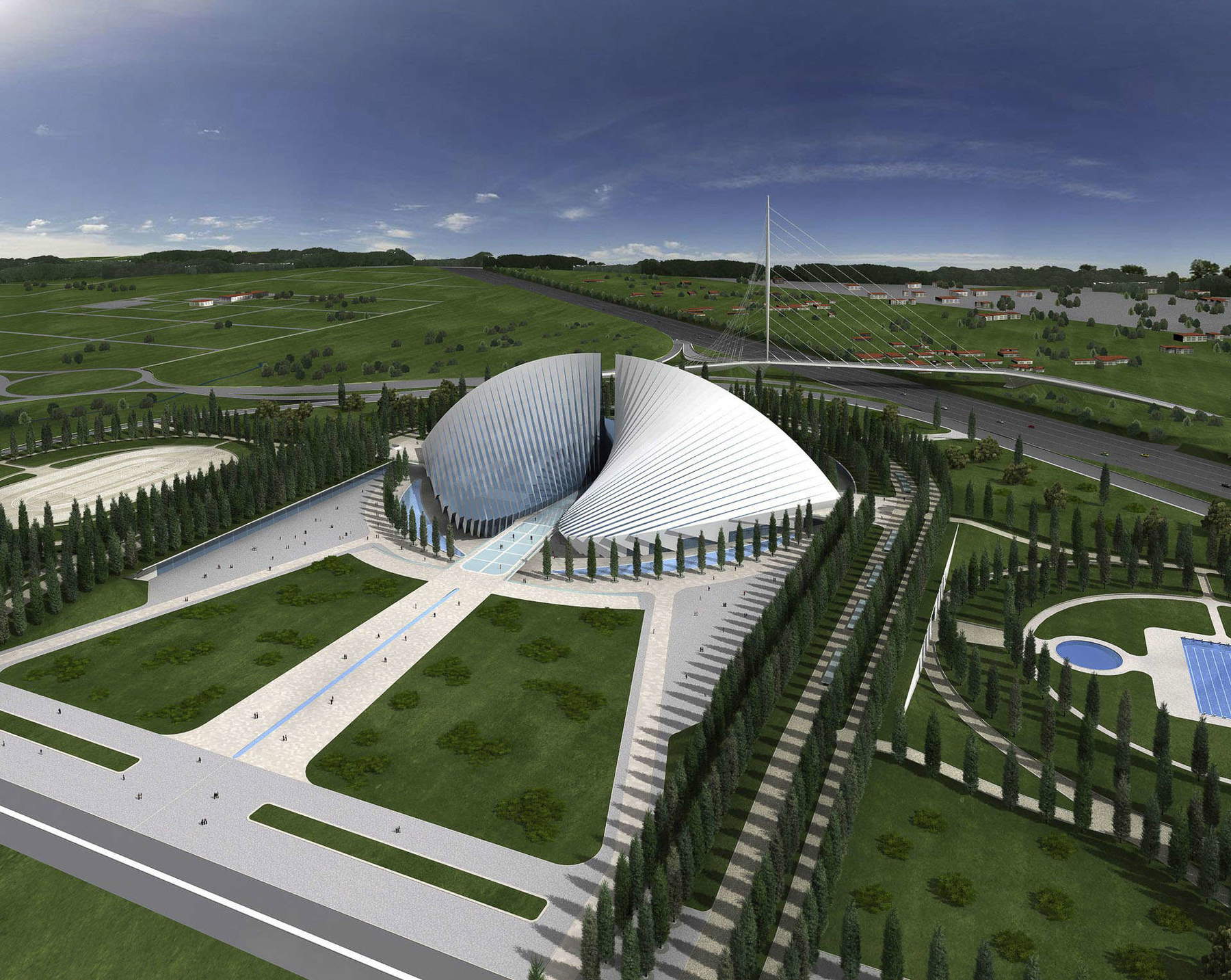
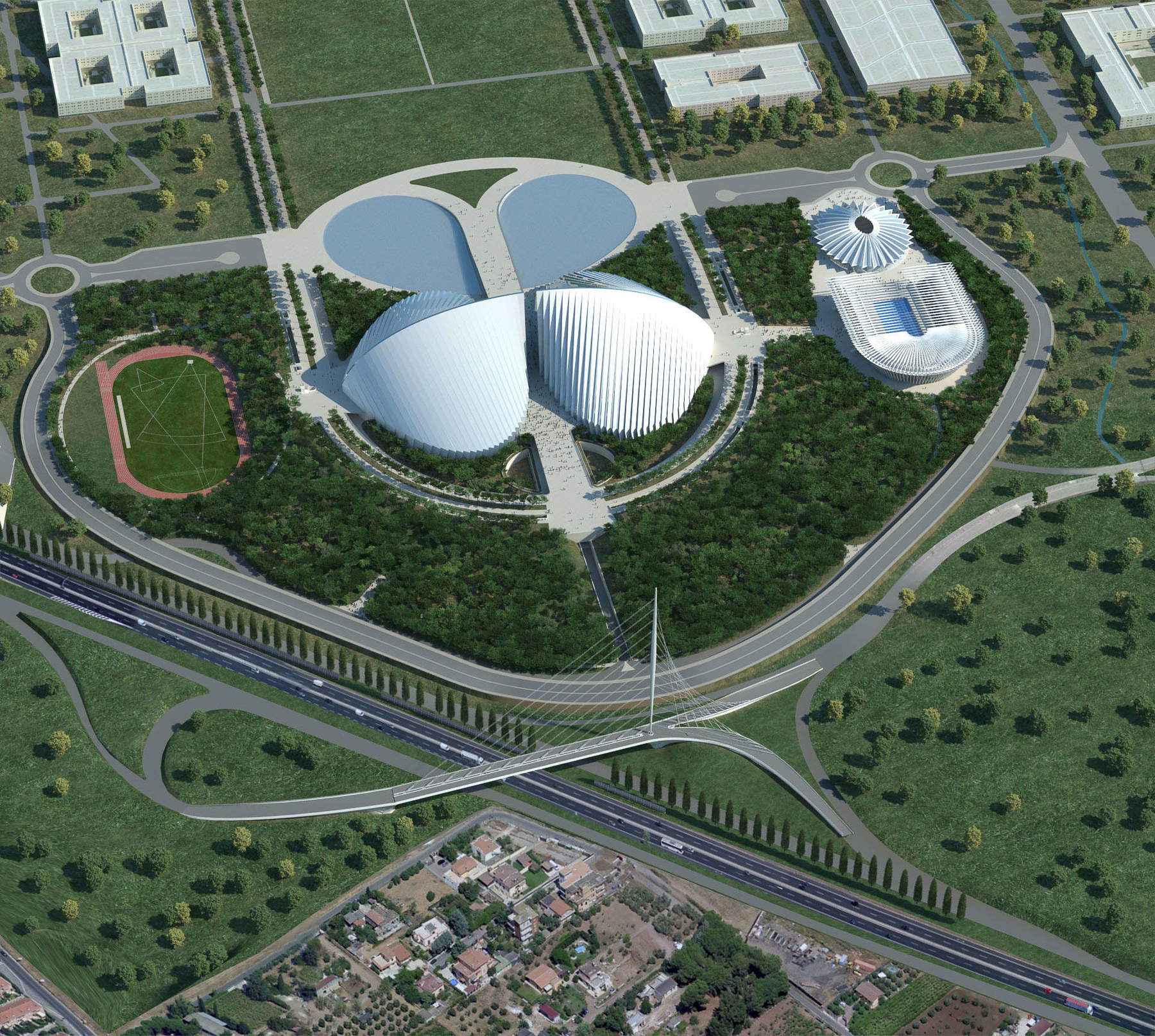
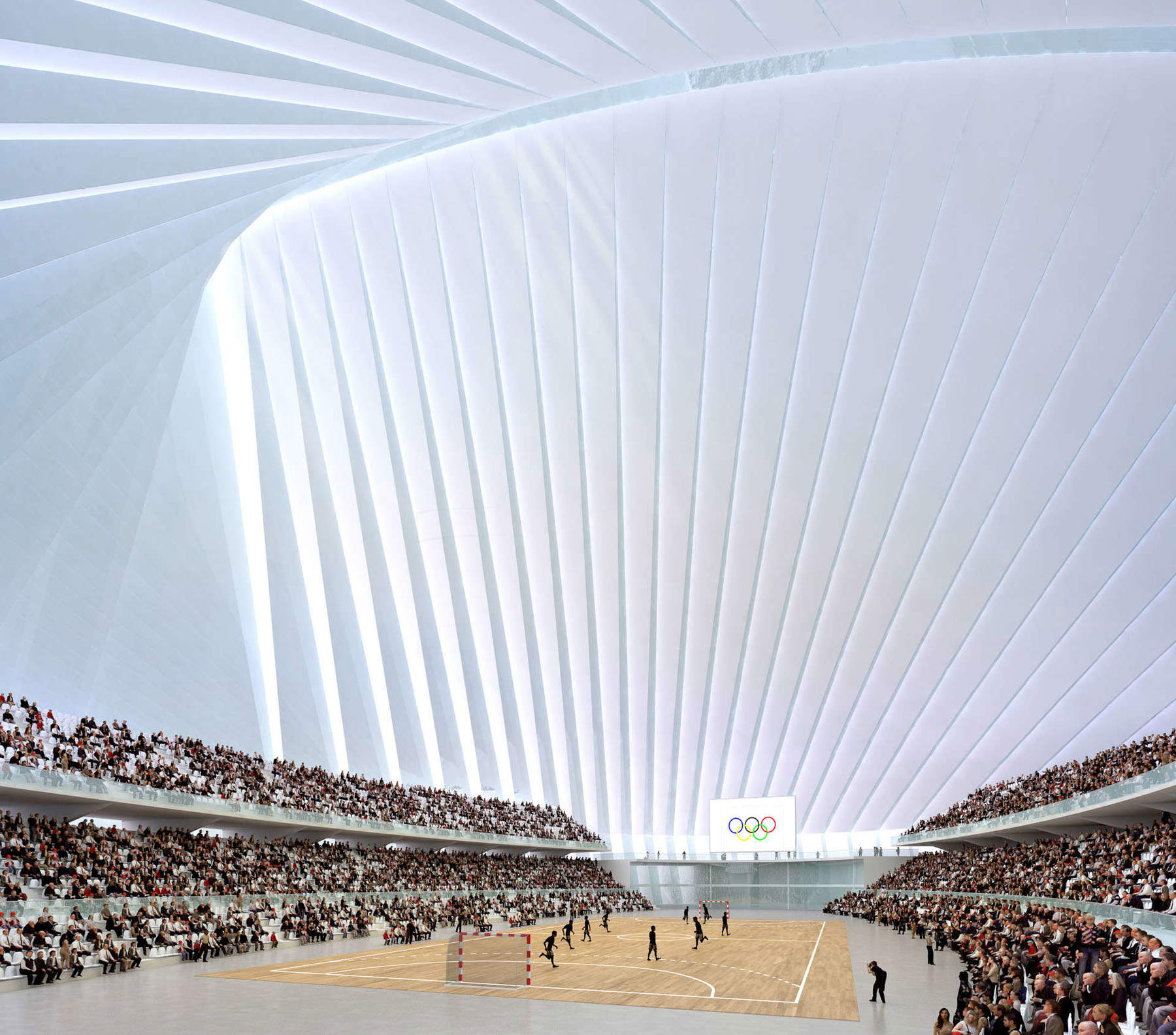
One of the two stadiums was to contain a swimming pool while the adjacent one was to contain a multipurpose playing field for basketball, volleyball, or other games. All around it was supposed to be a large, equipped green park. Instead, work stopped with only one of the roofs of the two stadiums being raised but without the insertion of the panels to close the roof, while the twin structure next door sees the basic structure of the sports arena completed, yet to be completed and closed. All around is the Roman countryside. The arena to host water sports would have a capacity of 8 thousand seats on the bleachers while the one for volleyball and basketball 15 thousand.
As is well known, the World Swimming Championships in 2009 were held in the Foro Italico swimming pools (built in 5 years between 1927 years and 1932), and over the years it was considered to resume work in view of the various bids for international events such as theExpo or the Olympics until last year when the work was included by the government (ownership of the building has since passed to the State Property Office) among those that cannot be postponed for the Jubilee 2025.
The project will have a change from the original: the missing second roof will not be built and leaving it open, as a result there will be an arena for events, shows, meetings and concerts. For maintenance work on the covered stadium and the construction of the 50-hectare park, 13 and 20 million euros have been allocated.
Making the roofing with the characteristic weave of beams would have been more complicated and costly by extending the timeframe too far beyond 2025. Suffice it to say that the initial cost on paper projected in 2005 was 60 million euros, but by 2007 the budget had already grown to 240 million euros and the final estimate was to spend 660 million euros, including the construction of the two artificial lakes that were to flank the pair of stadiums so as to form the petals of a four-leaf clover from the other. The two stadiums have an elliptical plan with a reinforced concrete structure with baffles, arranged radially from a single center, the steel beam roof with its 203 arches (with different geometries and sizes from each other, from about 37.0m the smallest to about 147.0m the largest) is 75 meters high and 6m 800 thousand kg of iron (as much as that used for the Eiffel Tower) was needed to build it. Completing the area is a 90-meter-high tower for the university and housing for 1,500 students in addition to other outdoor sports facilities such as athletic tracks, outdoor swimming pools and pavilions for exhibitions and displays.
Now, within 12 months, the structure, although modified in design, can be revived thanks to the Jubilee and avoid being left abandoned as the classic cathedral in the desert.
 |
| Rome, Calatrava's Sails completed for 2025 Jubilee |
Warning: the translation into English of the original Italian article was created using automatic tools. We undertake to review all articles, but we do not guarantee the total absence of inaccuracies in the translation due to the program. You can find the original by clicking on the ITA button. If you find any mistake,please contact us.




























